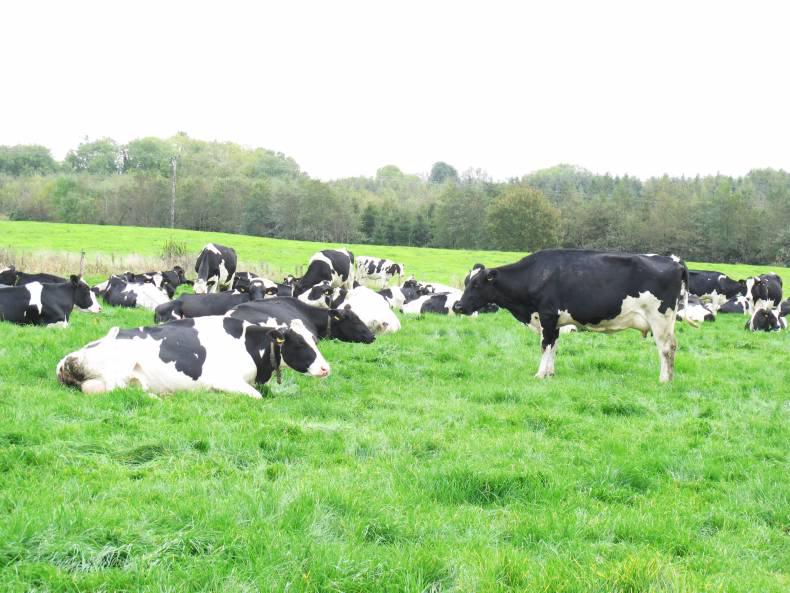It was evident from the disgruntled farmers present that heavy rain this week has made grazing almost impossible on heavy soils and tricky on dry soils. In terms of grass supply, the first thing to note is that some of the farmers said they were below target grass cover for the time of year. Given the recent dry spell, some of the farmers present from Kilkenny, Laois and parts of Tipperary were just finished feeding round bales as grass had been in tight supply. So, for some, the recent rain last weekend was very welcome. However, for other farmers from Cork and Kerry the weekend rain had made grazing very difficult and some had housed young heifers.
What should farm cover be for end of September?
Depending on your farm stocking rate, you need more or less grass on your farm to keep cows at grass until the end of November. Moorepark’s Michael O’Donovan suggests if your farm stocking rate is 2.5 cows/ha then you should have a farm cover of 1,000kg DM/ha for the end of September.
If the farm is stocked at 3.0 cows/ha (that’s 100 cows on 33ha), then you need to have more grass, so he said you should have a farm cover at the end of September of 1,200kg DM/ha. Getting to this peak cover is going to be difficult for those with low covers now.
However, they will grow enough grass over coming weeks if temperatures stay up. On heavy soils, some farmers will not aim to reach such high covers even if they are at low stocking rates because it would mean they will be grazing very heavy covers (over 2,500kg pre-grazing). Hence, they will prefer to keep farm cover slightly lower than the targets outlined above. Another way to measure farm cover is rotation length and Michael suggests rotation length should be 35 days by mid-September.
Table 1: Teagasc Target farm cover for end of September
2.5 cows/ha 1,000 kg DM/ha
2.7 cows/ha 1,100 kg DM/ha
3.0 cows/ha 1,200 kg DM/ha
Should you start to use strip wire now?
Yes. As you start to graze heavy covers, then you should be using a strip wire. The wire is essential to allocate grass to cows and minimise the damage to paddocks and to grass during periods of very heavy rain.
So that’s the farm cover target – what is target in terms of grazing off?
The aim is to have 60% of the farm closed by 6 November. This will give those paddocks a chance to grow grass before growth rates decline in November. Effectively, that block of ground that is last grazed in October and early November will provide the bulk of grass on the farm for February and March grazing. You want to build a cover of grass on it, carry it over the winter, and then start block grazing it in February.
Michael O’Donovan suggests if you have too much grass to get 60% grazed, then you should skip some of the heavy paddocks of grass and graze lighter covers in order to get more of the ground grazed.
What is the highest cover of grass you should carry over?
Some farmers in the south will carry grass covers over winter that are over 1,200 kg and maybe even up to 1,500kg DM/ha. For many farms, especially if wet weather takes hold towards the end of November, they will not get to graze the last of the final rotation and some farmers will carry that couple of paddocks over for February grazing. Yes, there will be some dieback over the winter, but there will still be a substantial quantity of quality grass next February for early calving cows.






 This is a subscriber-only article
This is a subscriber-only article





SHARING OPTIONS: